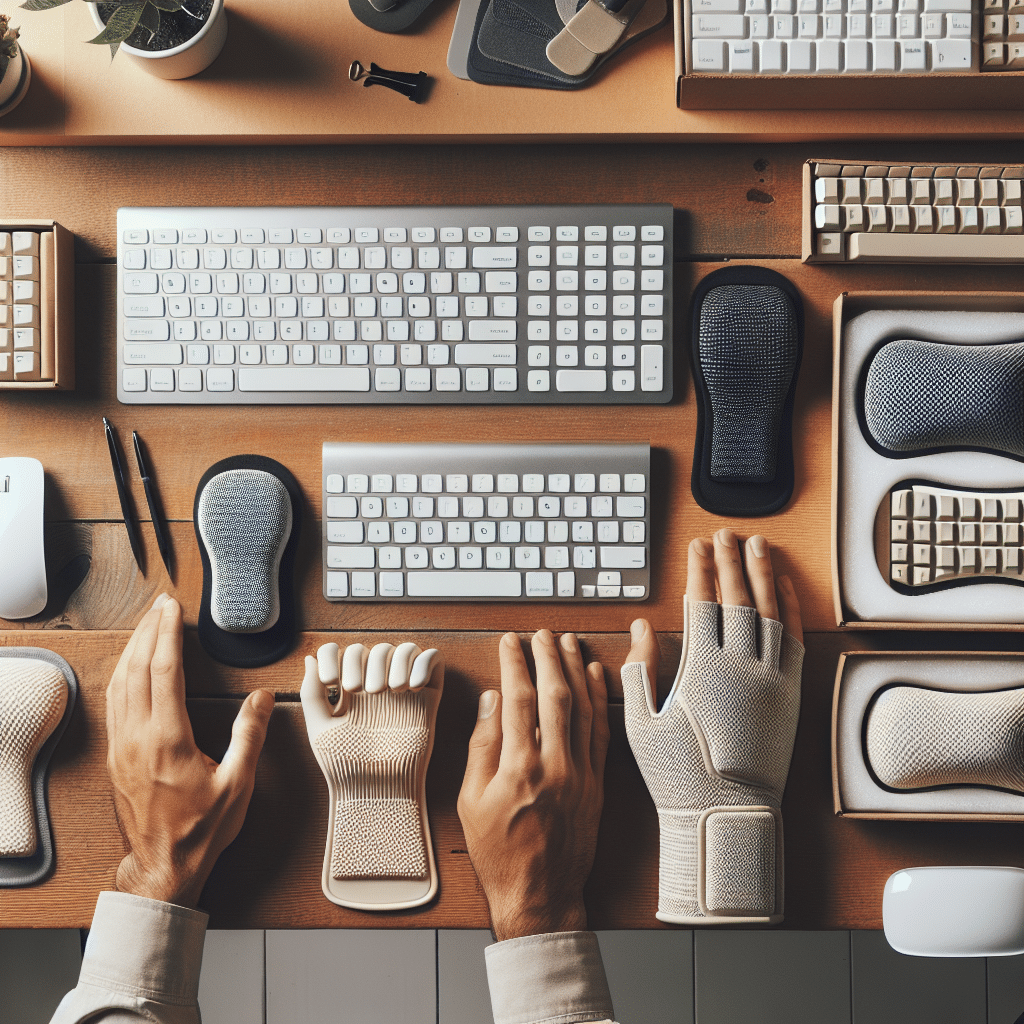What are Ergonomic Wrist Rests?
Ergonomic wrist rests are supportive pads designed to alleviate pressure on the wrists during typing or other repetitive hand tasks. They promote a neutral wrist position, which can significantly reduce discomfort and prevent conditions like carpal tunnel syndrome. Available in various materials, shapes, and sizes, these accessories cater to individual preferences and ergonomic needs.
Benefits of Using Ergonomic Wrist Rests
1. Reduces Strain and Fatigue
Using a wrist rest can significantly lower the strain on your wrists. By providing a cushioned surface for your wrists, these devices help maintain a neutral wrist angle. This positioning minimizes the risk of repetitive stress injuries and fatigue that often arise from prolonged typing sessions.
2. Promotes Proper Posture
A wrist rest encourages correct typing posture. Keeping the wrists elevated helps ensure that the hands are in alignment with your forearms. This can help prevent slouching or protruding the neck and shoulder, promoting overall ergonomic seating posture.
3. Enhances Comfort
Comfort is paramount to productivity. An ergonomic wrist rest provides a soft, supportive surface that can cushion the wrists, making typing for extended periods far more comfortable. Many models are adjustable or made from materials that adapt to the user’s wrist angle for added comfort.
4. Prevents Repetitive Strain Injuries
Repetitive strain injuries (RSI) are common among those who spend long hours typing. Wrist rests can alleviate some of the pressure associated with repetitive movements, potentially preventing conditions such as tendinitis, carpal tunnel syndrome, and other wrist or hand ailments.
Types of Ergonomic Wrist Rests
1. Foam Wrist Rests
Foam wrist rests are popular for their lightweight and soft cushioning. They mold to the wrist’s shape, providing support while allowing for free movement. However, they may compress over time, requiring replacement sooner than other materials.
2. Gel Wrist Rests
Gel wrist rests are filled with a viscous gel that offers excellent support while remaining cool to the touch. These types are favored for their ability to maintain a constant shape and provide relief during extended typing sessions. They often feature a slightly tacky surface, preventing slippage.
3. Memory Foam Wrist Rests
Memory foam wrist rests are designed specifically to contour to each individual’s wrist for maximum comfort and support. These rests provide a balanced combination of firmness and softness, which can alleviate pressure points effectively.
4. Hard Wrist Rests
Less common than their softer counterparts, hard wrist rests are often made from plastic or wood. They offer a sturdy support option and are beneficial for users that prefer less cushioning. However, they may not provide the same level of comfort during extended typing sessions.
Key Features to Consider When Choosing a Wrist Rest
1. Size and Fit
A properly sized wrist rest is crucial for effective use. It should align well with your keyboard and allow your wrists to rest comfortably without hanging off the edges. Measure your setup and consider different sizes to find what feels right.
2. Material
The choice of material can significantly affect comfort and usability. Soft materials, like fabric and gel, generally provide better cushioning and comfort, while harder materials offer stability and more structured support. Choose based on your typing habits and comfort preferences.
3. Stability
A stable wrist rest minimizes unnecessary movement and distractions when typing. Look for options with rubberized undersides to prevent slipping and ensure that the rest remains in place during use.
4. Adjustability
Some wrist rests offer adjustable features to accommodate various user preferences. This can involve height adjustments or detachable components to customize your setup. While not necessary for everyone, adjustability can enhance comfort for users with unique needs.
How to Incorporate a Wrist Rest into Your Workspace
1. Positioning
Position your wrist rest so that your wrists are aligned with your forearms. This ensures proper ergonomics and reduces strain. Elevate your keyboard slightly if necessary to maintain the right angle.
2. Alignment with Equipment
Ensure that the wrist rest is aligned with your keyboard and any other equipment you may use. Taking this into account avoids unnecessary twisting or reaching that can lead to injury.
3. Frequent Breaks
While wrist rests provide support, remember to take regular breaks while using your computer. Stand, stretch, or move around every 30 to 60 minutes. This will help maintain circulation and reduce muscle fatigue.
4. Ergonomic Workstation Setup
Combine your wrist rest with an overall ergonomic workstation setup. This includes an adjustable chair, a monitor positioned at eye level, and a keyboard and mouse that facilitate a neutral wrist position.
Cleaning and Maintenance of Wrist Rests
1. Regular Cleaning
Keep your wrist rest clean to maintain hygiene. Most foam and gel wrist rests can be wiped down with a damp cloth and mild detergent. Fabric wrist rests may require additional care, such as machine washing if they feature removable covers.
2. Address Wear and Tear
If your wrist rest begins to show signs of wear, such as flattening or loss of elasticity, consider replacing it. A worn wrist rest can no longer provide the needed support, potentially leading to discomfort or injury.
3. Avoid Excessive Exposure
Prevent excessive exposure to moisture or extreme temperatures as this can degrade the materials of the wrist rest. Store in a cool, dry place when not in use.
Conclusion
Investing in a quality ergonomic wrist rest can significantly enhance your typing experience. By understanding your needs, learning about different types of wrist rests, and incorporating best practices into your workspace, you can create a more comfortable and productive environment. Regular maintenance and consideration of ergonomic principles will ensure long-term benefits and help prevent discomfort or injury arising from extended periods of typing.
